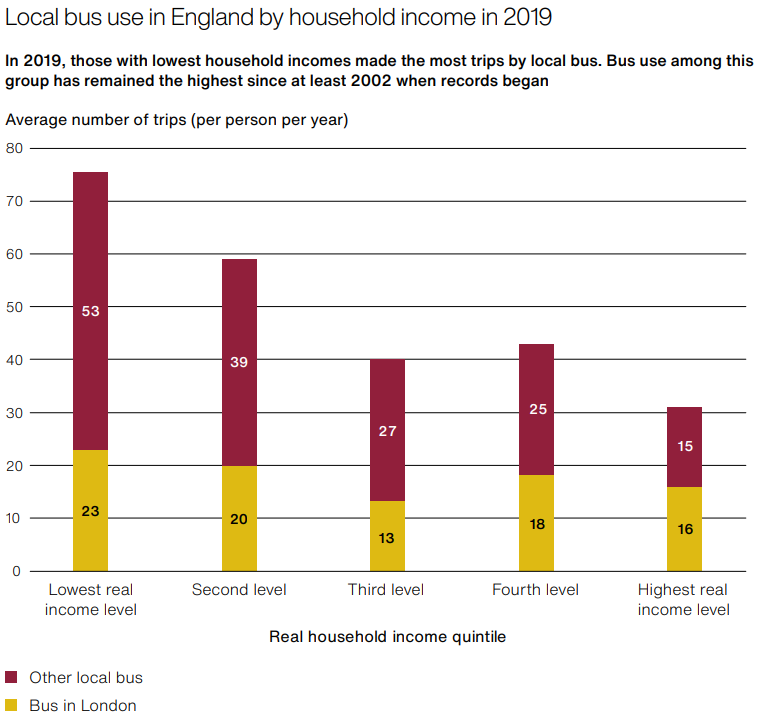By the end of October 2021, each Local Transport Authority in the UK will have to submit their first Bus Service Improvement Plan to the Department for Transport, detailing how they intend to work with local operators to achieve the goals of the recently formalised National Bus Strategy (NBS).
For many people, buses provide the only practical, frequently used method of transport, other than walking. For the over 70s, ethnic minority groups, and people on lower incomes, bus use remains particularly common.
The UK Department for Transport's 2020 report “Improving local bus services in England outside London” states that “those on the lowest household incomes take the highest number of bus trips”, and evidence suggests that those who live in more deprived areas, and depend on bus travel for work, are more likely to turn down jobs because of transport issues.

Planning for Communities
For those with disabilities, bus travel is also the most common form of transportation, and in some areas the only accessible form of transportation. As emphasised in the recently-published report by the Center for Human Rights and Global Justice, “Public Transport, Private Profit - The Human Cost of Privatizing Buses in the United Kingdom”, bus cuts and poor service have made them an unreliable mode of transport for people with disabilities, with the UN Special Rapporteur on extreme poverty and human rights going so far as to call UK bus services “incompatible with human rights requirements”.
While the benefits of providing better access to healthcare and employment may be obvious and tangible, the positive contribution to mental health, among those most at risk of becoming socially isolated, cannot be overstated. The NBS, therefore, represents an opportunity to redress the inclusivity-related shortcomings of bus services in England. It is an opportunity to develop more equitable services, created with an understanding and appreciation of the social value of buses.
The NBS proposes that buses can be key to levelling-up, stating that “users are disproportionately from less advantaged social groups and places” and that “improved services will strengthen communities, sustain town centres and connect disabled and isolated people.” It recognises the potential for buses to help drive better employment outcomes for disabled people, and advocates for consultations where their experiences can be used to inform the design of bus infrastructure improvements.

In the third part of our NBS series, we looked at multimodal planning in the context of the National Bus Strategy, and how Podaris can help fulfill the requirement of streamlining inter-connectivity. As a tool for rapidly and collaboratively modelling transport scenarios, Podaris helps planners explore the impact of service and infrastructure alterations in a fraction of the time taken with more traditional tools.
It makes demographic analysis trivial, with zero set-up time, allowing you to generate outputs in seconds. It helps you to visualise, and then present to stakeholders, the impact of changes to routes, from modification of patterns, to fleet size alterations.
With tools for exploring travel time and catchment you can easily understand what effect changes to your networks will have on communities and help fulfil the Bus Service Improvement Plans (BSIPs) criterion that LTAs and operators “review socially necessary services”.
Find out more about how Podaris can help support your BSIPs by scheduling a demo with us today.
You can catch up with the rest of our National Bus Strategy focused series here:
I. Podaris & The National Bus Strategy
II. Bus Planning for the UK National Bus Strategy
III. A Multimodal Approach to Bus Service Improvement Plans
IV. Fare Strategy Modelling and the UK National Bus Strategy